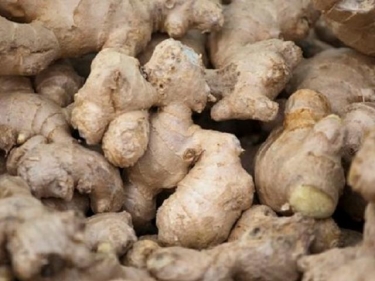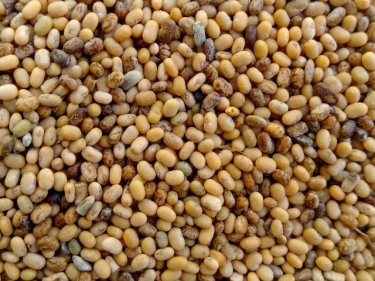What's Next for the Trans-Pacific Partnership (TPP) in 2023
Discover the future of the Trans-Pacific Partnership in 2023: Learn about the opportunities and challenges this agreement will bring to the global economy & more.

The Trans-Pacific Partnership is a trade liberalization agreement negotiated by 11 member countries from the Asia-Pacific region, including Japan, Australia, New Zealand, Singapore, and others. The combined population of the region is more than 500 million people, and the gross domestic product exceeds $11 trillion (about 1,250 trillion yen), reaching 10% of the world's total. The agreement implies the deepening of economic ties between the participants, in particular, the reduction or cancellation of most customs duties on goods and services. Among the priority areas of cooperation are investments, telecommunications, agriculture, labor law, ecology, and intellectual property.
When did it all start?
The proposal for a regional trade partnership was made in 2003 by the governments of New Zealand, Singapore and Chile. In 2006, the so-called "Pacific Four" trade agreement entered into force, which, in addition to the initiating countries, also included Brunei. It implied the abolition of trade duties on most goods and cooperation in various areas, such as intellectual property, labor law and competition issues.
Negotiations on the Transatlantic Partnership in its current form began in 2008.
Despite the fact that twelve countries agreed to the partnership in 2015, the administration of President Donald Trump, which emerged in 2017, announced its withdrawal. With the threat of a complete collapse of the arrangement, countries worked hard to conclude and operationalize the arrangement in 2018 under the name of the "Comprehensive and Progressive Trans-Pacific Partnership" in the absence of the United States.
Comprehensive and Progressive Trans-Pacific Partnership
Comprehensive and Progressive Trans-Pacific Partnership is the new agreement signed by Asia-Pacific countries without the U.S., which took effect in 2018. The agreement is aimed at deepening trade and economic relations between the states of the Pacific coast, the maximum elimination of internal trade barriers, stimulating economic growth of participating countries and the gradual abolition of customs duties and quotas on some goods and services. A special feature of this association is that along with the high level of trade liberalization, it sets the most advanced rules in the field of copyright and data protection. Participating countries are required not only to eliminate customs duties on industrial and agricultural products in general, but also to comply with high-level rules in areas such as intellectual property rights protection, state-owned enterprises and labor standards.
Extending the Agreement. Who Else Wants to Join?
Current applicants
United Kingdom
In January 2018, the government of the United Kingdom stated it was exploring membership of the CPTPP to stimulate exports after Brexit and has held informal discussions with several of the members. In October 2018, Japanese Prime Minister Shinzo Abe stated that the United Kingdom would be welcome to rejoin the cooperation following Brexit.
In June 2020, the government of the United Kingdom issued a policy paper reaffirming the U.K.'s position on accession to the CPTPP. There were three reasons given:
• Increasing trade and investment opportunities to assist the UK economy in overcoming the exceptional challenge posed by coronavirus.
• Joining CPTPP will provide new opportunities for UK exporters in strategically critical areas, while also supporting the UK's industrial renaissance.
• Assisting the United Kingdom in diversifying its trading linkages and supply chains, and therefore boosting economic security at a time of increased global unpredictability and instability.
On 1 February 2021, The United Kingdom formally filed to join CPTPP. The UK is the first non-founding country to apply for membership in the CPTPP. If successful, it would overtake Japan as the second largest CPTPP economy. On 18 February 2022, confirmation came from the Japanese government, as Chair of the UK’s Accession Working Group on behalf of the CPTPP members, that the UK has moved into the second (and final) ‘market access’ phase of negotiations with the CPTPP.
The Japanese government confirmed on 18 February 2022, as Chair of the UK's Accession Working Group on behalf of the CPTPP countries, that the UK had entered the second (and final)'market access' phase of negotiations with the CPTPP.

China
In May 2020, China's Premier Li Keqiang said that China was willing to consider joining CPTPP. Meanwhile, China's leader Xi Jinping said at an Asia-Pacific Economic Cooperation (APEC) summit in November 2020 that China would “actively consider” joining CPTPP. On 16 September 2021, China formally applied to join CPTPP.
Taiwan
Taiwan applied to join CPTPP on 22 September 2021.
It had previously expressed interest to join TPP in 2016. After TPP's evolution to CPTPP in 2018, Taiwan indicated its will to continue efforts to join CPTPP. In December 2020, the Taiwanese government stated that it would submit an application to join CPTPP following the conclusion of informal consultations with existing members. In February 2021 again, Taiwan indicated its will to apply to join CPTPP at an appropriate time. A few days after China submitted its request to join the CPTPP, Taiwan sent its own request to join the CPTPP, a move that has been one of the main policy objectives of Tsai Ing-wen's government.
Ecuador
Ecuador has filed its application to join the CPTPP trade pact on 29 December 2021 as the country moves to reduce its reliance on oil and diversify its economy through exports.
Costa Rica
Costa Rica has filed its application to join the CPTPP trade pact on 11 August 2022
Uruguay
Uruguay filed its application to join the CPTPP trade pact on 1 December 2022
Potential applicants
South Korea
South Korea's Moon administration stated its intention to join the CPTPP in January 2021. To achieve the CPTPP requirements, the country will investigate sanitary and phytosanitary measures, fishery subsidies, digital trade, and recommendations for state-owned firms. The South Korean government has formally declared that it would launch its application for CPTPP membership in December 2022.
Thailand
Foreign Minister Don Pramudwinai is likely to submit a letter of intent to the cabinet for approval soon in order for the government to apply to join the deal.
Philippines
The Philippines previously wanted to join the TPP in 2016 under Benigno Aquino, who said that the country stood to gain from becoming a member of the trade pact.
Stay In the Loop with Export Portal
In the world of trade, you must always stay updated and be in the know. For more articles like this one, make sure to check out Export Portal’s blogs and learn everything trade-related!


















Comments 0